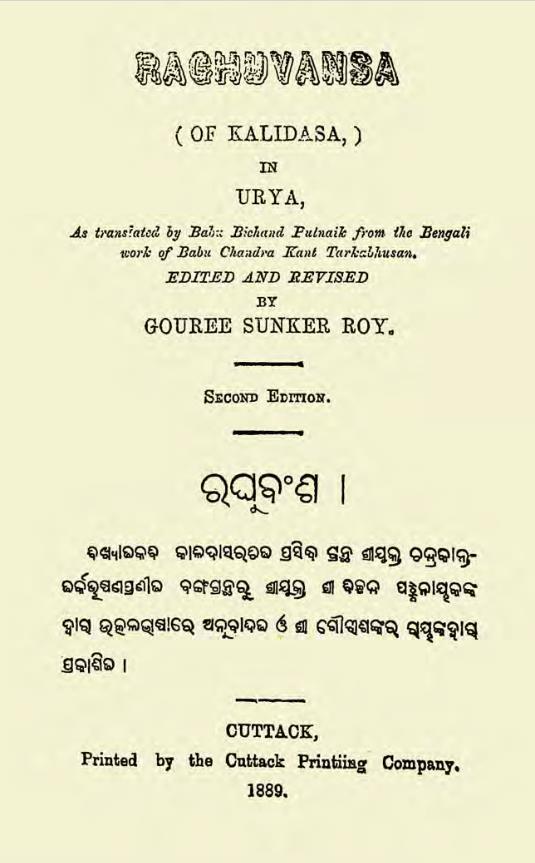Kalidasa, an eminent luminary of Sanskrit literature, is often heralded as one of the greatest poets and dramatists in Indian history. Among his significant works is the ‘Raghubansh’ (or ‘Raghuwansh’), an epic poem that embodies the cultural and literary ethos of ancient India. This magnificent piece was translated into Odia by Chandrakant in 1889, bringing its profound themes to a wider audience.
The ‘Raghubansh’ narrates the lineage and virtues of the Raghu dynasty, known for its illustrious kings, including the revered Lord Rama. The poem elegantly traces the genealogy from the sun-god to King Raghu and his descendants, illustrating their righteousness, valor, and dedication to duty. Kalidasa’s magnum opus is a perfect blend of poetry, philosophy, and morality, encapsulating the ideals of kingship and dharma (righteousness).
The narrative is not merely historical; it transcends time and space, embodying universal themes such as love, duty, and sacrifice. Kalidasa’s portrayal of the characters reflects their multifaceted personalities, showcasing their strengths and weaknesses, thereby rendering them relatable even in contemporary contexts.
One of the most potent themes in ‘Raghubansh’ is the concept of dharma. The kings of the Raghu dynasty are depicted as paragons of virtue, whose commitment to righteousness serves as an ideal for generations. Through their actions, Kalidasa emphasizes the importance of moral and ethical conduct in governance. The poem serves as a reminder that true leadership is grounded in honor and justice.
Another compelling theme is the essence of love, particularly the eternal bond between Rama and Sita. Their relationship is a central motif that reinforces the values of loyalty and devotion. This romantic idealism, beautifully rendered in Kalidasa’s verses, has left an indelible mark on Indian literature and culture.
Chandrakant’s translation into Odia plays a crucial role in making Kalidasa’s poetry accessible to a broader audience. His translation facilitates not just a linguistic but also a cultural exchange, allowing readers to delve into the rich tapestry of Indian mythology and heritage. It serves as a bridge between the classical and contemporary, enabling readers to appreciate the nuances of the original text while resonating with their cultural sensibilities.
The aesthetic appeal of ‘Raghubansh’ lies in Kalidasa’s exquisite use of language. His command over meter, rhyme, and imagery creates a lyrical quality that captivates readers. The vivid descriptions of nature, seasons, and emotional landscapes render a picturesque backdrop against which the drama of life unfolds.
Chandrakant’s translation maintains the musicality of Kalidasa’s original poetry, ensuring that the rhythmic cadence reaches the Odia-speaking audience. This fidelity to form and spirit enhances the reading experience, allowing readers to immerse themselves in the beauty of the text.
Books Info
| Books name | Raghubans / ରଘୁବଂଶ |
| Author | Kalidas; Chandrakant, Tr.; Bichhand Charan Patnaik, Tr. |
| No Of pages | 168 |
| Publisher | NA |
| Publication | 1889 |
| Printed At | The Cuttack Priting Company |
| Distributor | NA |

